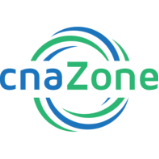Course Description
HIV and AIDS
Course Summary
The human immunodeficiency virus (HIV) and acquired immune deficiency syndrome (AIDS) continues to be an enormous public health problem in the United States and worldwide. HIV is transmitted through multiple ways but the primary risk of transmission is through sexual contact or exposure to infected blood. HIV is the virus that causes the illness called AIDS. Patients diagnosed with AIDS can become exposed to opportunistic infections and cancers, and can be discouraged with their prognosis, which is poor without the proper treatment. Importantly, the risk of HIV infection and AIDS poses a concern for all healthcare workers. Prevention, immediate and proper reporting, and treatment of any exposure to infectious blood or body fluid must be followed. Statistics of HIV infection rates for healthcare workers are discussed.
Course Objectives
- Know the definition of HIV and AIDS
- Understand the two most common ways that HIV is transmitted
- Describe the types of testing for HIV
- Identify basic precautions used when caring for patients with HIV or AIDS
- Proper steps to perform if contact with patient blood or body fluid occurs
Course Syllabus
- Introduction
- Human Immunodeficiency Virus
- Acquired Immune Deficiency Syndrome
- HIV/AIDS Treatment
- HIV/AIDS Prevention And Safety
- Exposure To HIV Infected Blood
- Case Study
Target Audience:
CNA
Credits:
1.0



